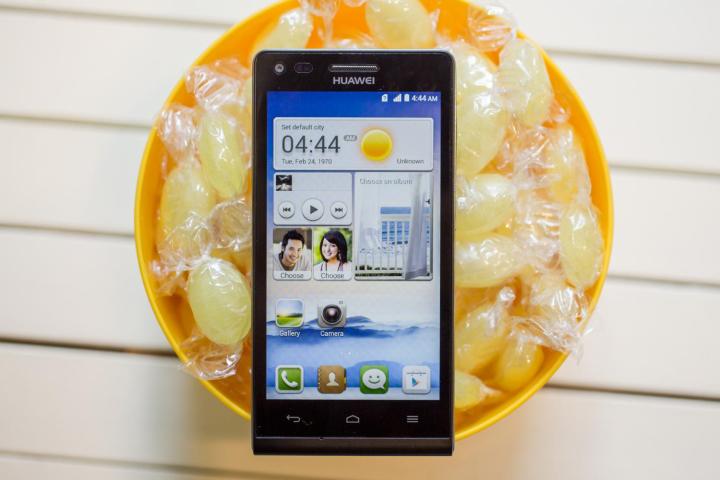
Chinese phone manufacturer Huawei has had a hard time making its way into the U.S. market, but it’s doing well for itself on the world stage. At MWC press conference in Barcelona today, the company’s executive vice president Colin Giles spent of much his time on stage talking numbers and laying out the blueprint for Huawei to become a global brand.
With 52 million units sold in 2013, including 3 million of its Ascend P6, Huawei clocks in as the world’s third largest smartphone vendor. It hopes to improve upon those figures with a few new devices. In other posts, we talked about the new TalkBand and 7-inch MediaPad X1 phone, but there were two more ordinary devices shown, as well.
One of the focal points of Huawei’s conference was 4G LTE. The company used just about every bit of rhetoric imaginable to describe how important 4G LTE is for connectivity, and backed it up by showing off a mobile hotspot. The Huawei E5786 (so much time went in to developing it, they forgot to give it a decent name) offers LTE CAT-6, support for 802.11a/b/g/n and 802.11ac, and is capable of downloading a movie in “30 seconds” according to Huawei. Up to 10 devices can be connected to the E5786 (doesn’t that just roll off the tongue?) at a time, and a QR code feature makes connecting easy. The hotspot is also equipped with a 3,000mAh battery and can be used to charge devices. Huawei happily claims it to be “the world’s fastest mobile hotspot.”

Huawei also brought a new addition to it’s tablet lineup to Barcelona: the MediaPad M1, priced at 300 EUR – about $410 USD. The device features an 8-inch, 1280 x 800 pixel screen. It is 7.9mm thick and weighs in at 329g. Front-facing speakers mounted on the side of the device offer a more ideal listening situation. Huawei tagged the device as being “designed to bring entertainment everywhere,” and backs it up with a 4,800mAh battery, which the company promises will get you through eight full movies.



